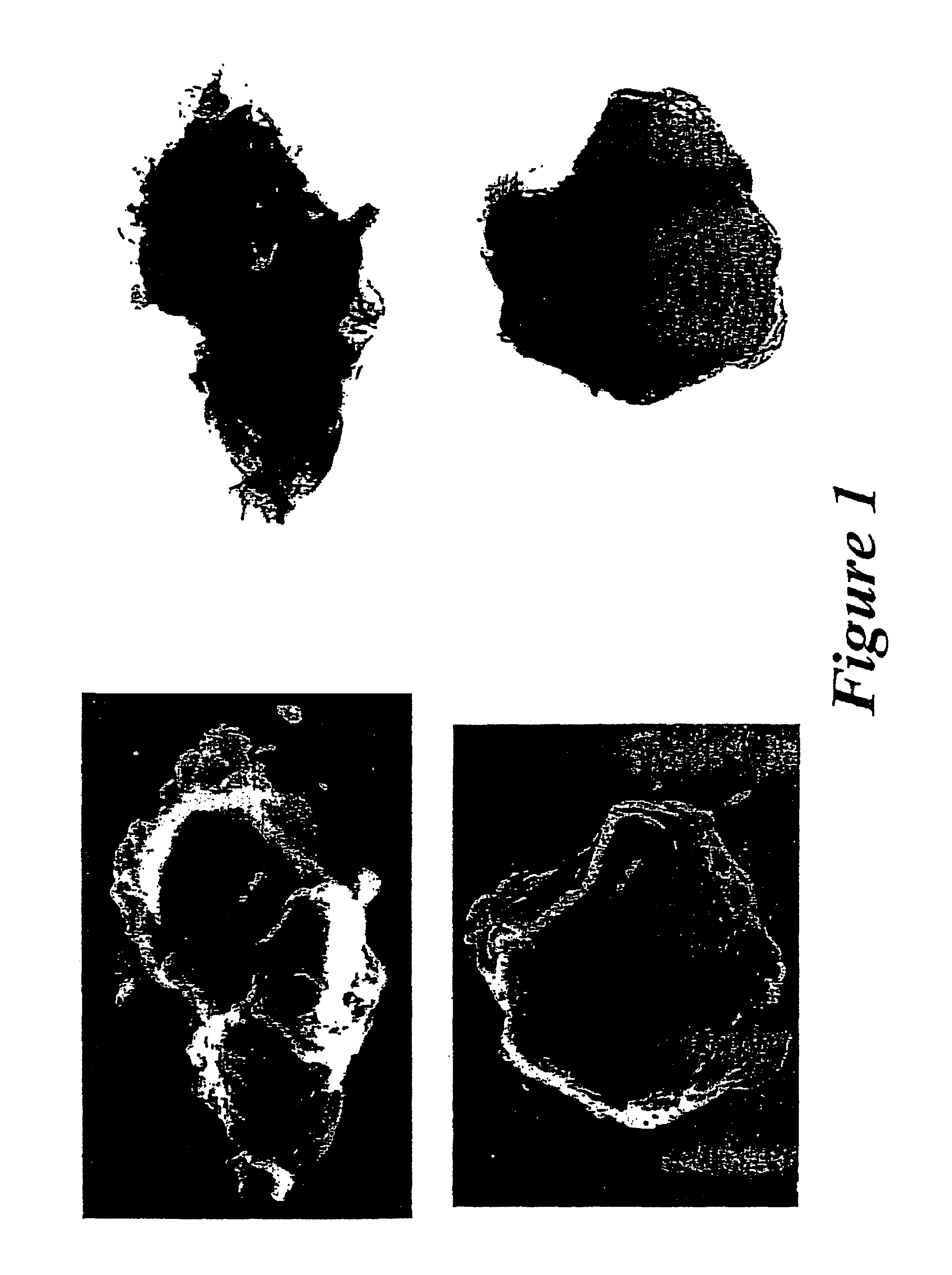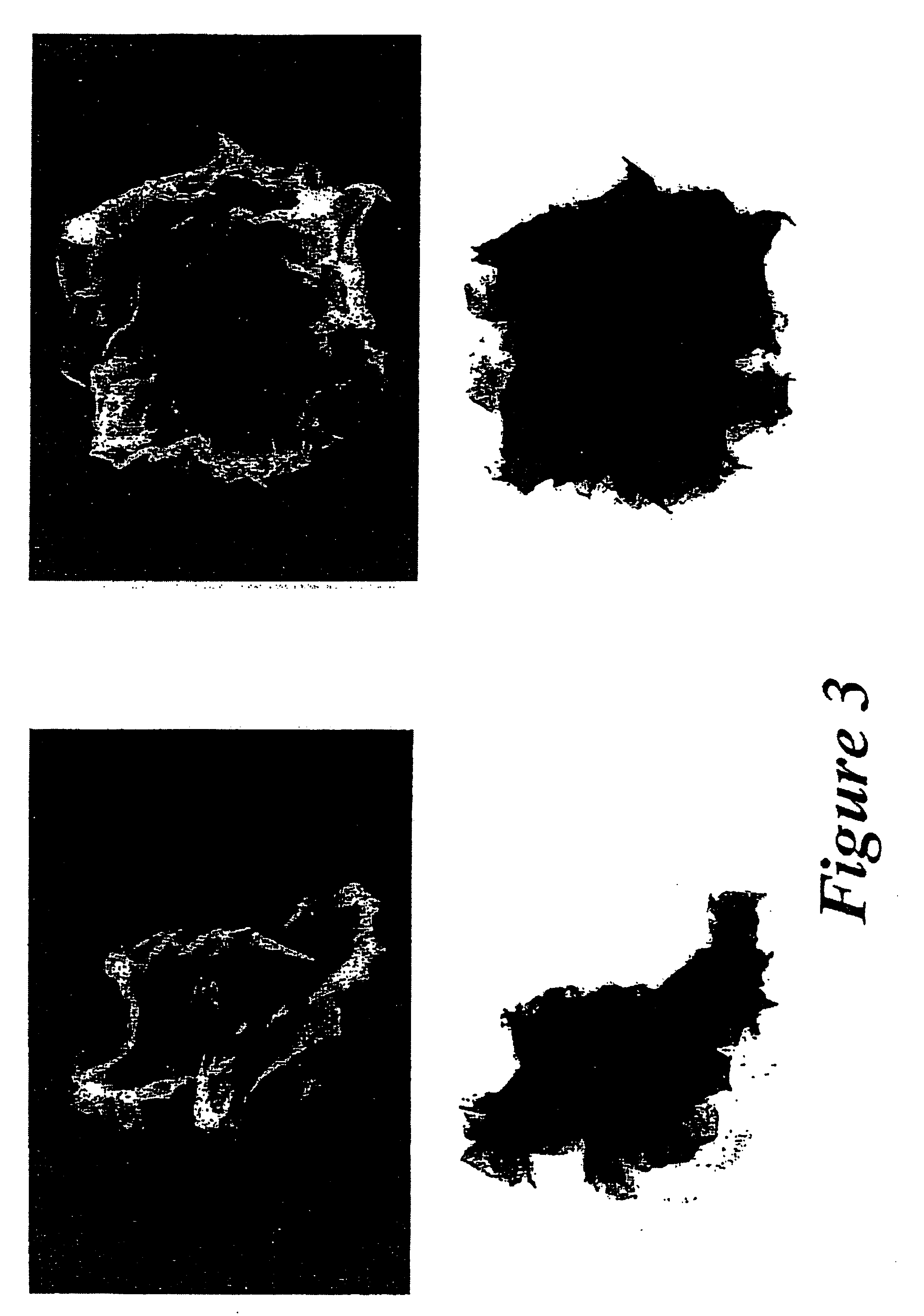Hydrotalcites, syntheses, and uses
a technology of hydrotalcite and hydroxide, applied in the field of catalysts, can solve the problems of limited success of butyric acid, water-soluble acid, and acid that is a csub>4/sub>acid
- Summary
- Abstract
- Description
- Claims
- Application Information
AI Technical Summary
Benefits of technology
Problems solved by technology
Method used
Image
Examples
example 1
Step I Carried Out in Water Medium
[0043]CATAPAL® alumina (0.26 moles) was suspended in 500 ml deionized water in a 4-liter beaker and stearic acid (0.23 moles) was added to the stirred suspension. The beaker was fitted with a crystallizing dish filled with ice water to condense volatiles in the beaker as it was heated to 75°-85° C. and the temperature was maintained for 4 to 8 hours. At the end of this period, magnesium oxide (0.44 moles) was added, followed by 1.5 liters of deionized water. The mixture was heated to 90°-95° C. and the temperature was maintained for 4 to 8 hours. The mixture was cooled to room temperature overnight with stirring. The resulting material can preferably be dried in one of two ways:[0044]a) in an air oven at 130° C. until a semi-dry solid is obtained, which is further dried in a vacuum oven at 80° C. overnight; or[0045]b) by spray-drying at approximately 200° C. inlet temperature and about 100° C. outlet temperature.
example 2
Step I Carried Out in Organic Solvent(s)
[0047]The reaction of the trivalent cation source and carboxylic acids that are water immiscible, such as stearic acid, can preferably be carried out in an organic solvent, such as refluxing hexane. CATAPAL® alumina (0.26 moles) was suspended in 200 ml hexane in a 4-liter beaker and the acid (0.23 moles) was added to the stirred suspension. The beaker was fitted with a crystallizing dish filled with ice water to condense volatiles in the beaker as it was heated to about 65° C. and the temperature was maintained for 4 to 8 hours. The solvent may preferably be removed by evaporation or filtration. Water was added to the resulting residue. Magnesium oxide (0.44 moles) was then added with vigorous stirring. The mixture was heated to about 90°-95° C. and the temperature was maintained for 4 to 8 hours. Product isolation, i.e., drying, was carried out as described in Example 1 above. Using this approach, a homogenous synthetic hydrotalcite was obtai...
example 3
Step I Carried Out in an Acid Melt
[0049]A beaker containing the required amount of solid stearic acid was heated on an oil bath until the acid melted. The desired stoichioimetric amount of alumina was added in small portions to the melt with stirring. The temperature was maintained for about two or more hours. Water was added to the product, and the mixture was stirred to an even consistency. Magnesium oxide was added, followed by 1.5 liters of deionized water. The mixture was heated to 90°-95° C. and the temperature was maintained for 4 to 8 hours. The mixture was allowed to cool to room temperature overnight with stirring. Product isolation was carried out as in Example 1 above.
[0050]A difficulty encountered with this approach was similar to that observed in Example 1, i.e., the product was greasy. However, an advantage of using the acid melt approach is that the reaction rate in an acid melt is much faster than that observed in water. With adequate mixing in the acid melt, a more...
PUM
| Property | Measurement | Unit |
|---|---|---|
| molar ratio | aaaaa | aaaaa |
| molar ratio | aaaaa | aaaaa |
| molar ratio | aaaaa | aaaaa |
Abstract
Description
Claims
Application Information
 Login to View More
Login to View More - R&D
- Intellectual Property
- Life Sciences
- Materials
- Tech Scout
- Unparalleled Data Quality
- Higher Quality Content
- 60% Fewer Hallucinations
Browse by: Latest US Patents, China's latest patents, Technical Efficacy Thesaurus, Application Domain, Technology Topic, Popular Technical Reports.
© 2025 PatSnap. All rights reserved.Legal|Privacy policy|Modern Slavery Act Transparency Statement|Sitemap|About US| Contact US: help@patsnap.com



